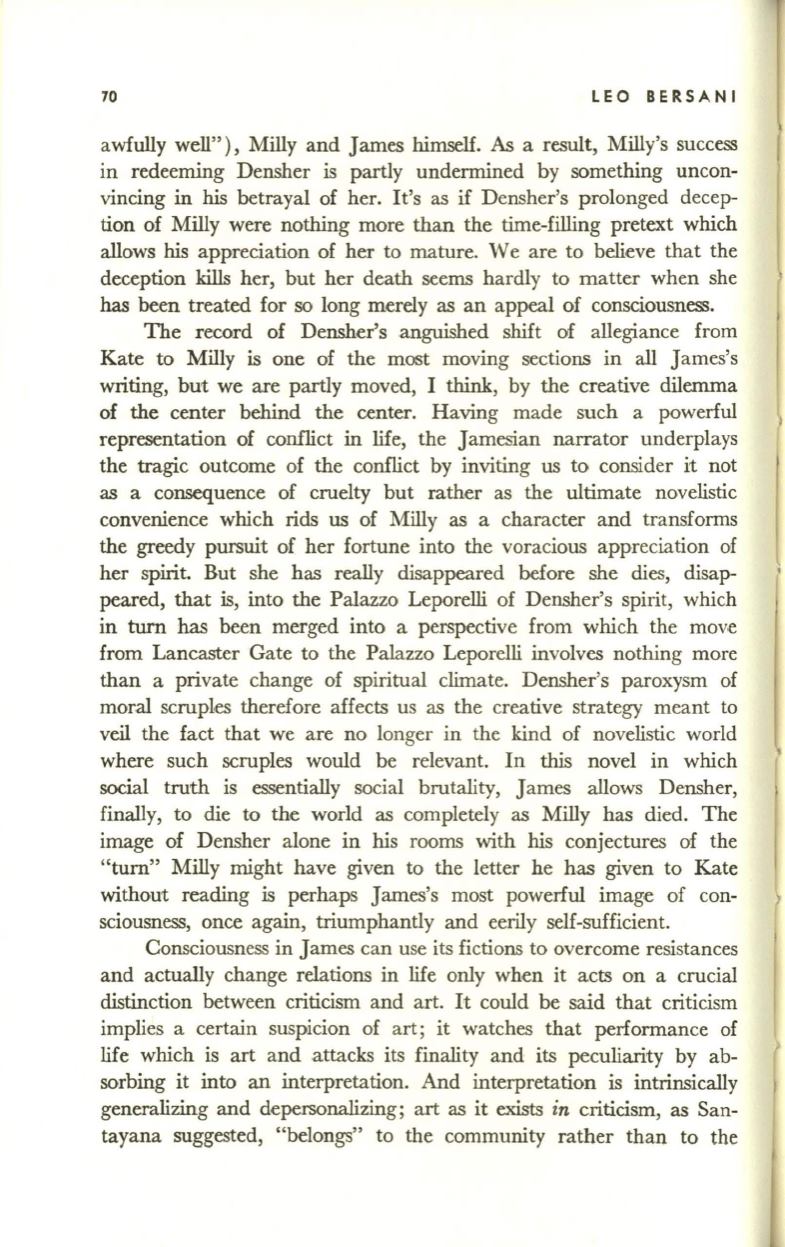
70
LEO BERSANI
awfully well"), Milly and James himself.
As
a result, Milly's success
in redeeming Densher is partly undermined by something uncon–
vincing in his betrayal of her. It's as if Densher's prolonged decep–
tion of Milly were nothing more than the time-filling pretext which
allows
his
appreciation of her to mature. Weare to believe that the
deception
kills
her, but her death seems hardly to matter when she
has
been treated for so long merely as an appeal of consciousness.
The record of Densher's anguished shift
of
allegiance from
Kate to Milly is one of the most moving sections in all James's
writing, but we are partly moved, I think, by the creative dilemma
of the center behind the center. Having made such a powerful
representation of conflict in life, the Jamesian narrator underplays
the tragic outcome of the conflict by inviting us to consider it not
as a consequence of cruelty but rather as the ultimate novelistic
convenience which rids us of Milly as a character and transforms
the greedy pursuit of her fortune into the voracious appreciation of
her spirit. But she has really disappeared before she dies, disap–
peared, that is, into the Palazzo Leporelli of Densher's spirit, which
in turn
has
been merged into a perspective from which the move
from Lancaster Gate to the Palazzo Leporelli involves nothing more
than a private change of spiritual climate. Densher's paroxysm of
moral scruples therefore affects us as the creative strategy meant to
veil the fact that we are no longer in the kind of novelistic world
where such scruples would be relevant. In this novel in which
social truth is essentially social brutality, James allows Densher,
finally, to die to the world as completely as Milly has died. The
image of Densher alone in his rooms with his conjectures
of
the
"tum" Milly might have given to the letter he has given to Kate
without reading is perhaps James's most powerful image of con–
sciousness, once again, triumphantly and eerily self-sufficient.
Consciousness in James can use its fictions to overcome resistances
and actually change relations in life only when it acts on a crucial
distinction between criticism and art. It could be said that criticism
implies a certain suspicion of art; it watches that performance of
life which is art and attacks its finality and its peculiarity by ab–
sorbing it into an interpretation. And interpretation is intrinsically
generalizing and depersonalizing; art as it
exists
in
criticism, as San–
tayana suggested, "belongs" to the community rather than to the


